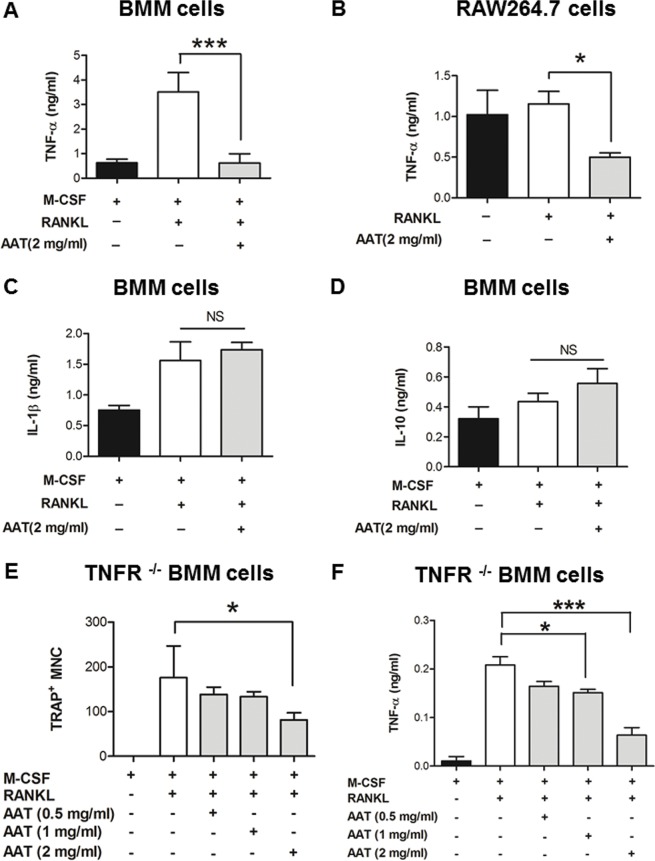Figure 3.
AAT inhibits RANKL-induced TNF-α production during osteoclast formation. (A) TNF-α concentrations in the culture medium of osteoclast cells derived from BMM cells. Here, AAT (2 mg/mL) was added from d 4–7 according to Exp-2 (which is diagrammatically mentioned in Figure 2A). (B) TNF-α concentrations in the culture medium of osteoclast cells derived from RAW267.4 cells. Here, AAT (2 mg/mL) was added during RANKL-induced osteoclast formation (d 0–6). (C–D) The concentrations of IL-1β and IL-10 in BMM cell– derived osteoclast culture medium (n = 6). (E) TRAP+ MNCs (cell number/well of 96-well cell culture plate) derived from BMM cells of TNF-α receptor knockout mice (TNFR1-/- and TNFR2-/-). Here, AAT was added from d 4–7 according to Exp-2 during osteoclast generation. (F) The concentration of TNF-α in the culture medium of osteoclast cells derived from TNF-α receptor knockout mouse BMM cells according to Exp-2. Values are means ± SEM of at least triplicate samples. Data were analyzed using one-way analysis of variance followed by Dunnett’s multiple comparison test. *P < 0.05, ***P < 0.0001; NS = nonsignificant.

